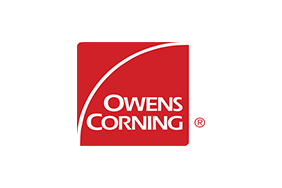Color Your Home Green This Earth Day
Published 04-21-08
Submitted by Owens Corning
TOLEDO, Ohio, April 21, 2008 /PRNewswire-FirstCall/ -- With warm weather just around the corner, Owens Corning (NYSE: OC), wants to remind homeowners this Earth Day that insulation isn't just for keeping homes warm in winter. Insulation also keeps homes cooler in summer by keeping heat outside and conditioned air inside. According to a recent study by the McKinsey Global Institute, insulation is the single most cost-effective measure to reduce greenhouse gas emissions.(1) That gives homeowners another tool to make their homes more energy efficient and comfortable -- and the planet a little greener.
"Many people don't realize that the energy used in homes and buildings, much of it for heating and cooling, is the number one source of greenhouse gas emissions, using 40 percent of all the energy we produce in the US. That's more than industry, more than transportation," said Gale Tedhams, director of sustainability for Owens Corning, makers of PINK fiberglass insulation. "Conservation should be thought of as your first fuel because energy you don't have to use is the cheapest energy you can buy."
Finding out if you need more insulation is easy. Look in your attic -- if you can see the wood beams of your attic floor, you likely need more. The amount of insulation needed varies depending on the region of the country you live in but, in most cases, the Department of Energy recommends attics be insulted to R-49. The R-value represents thermal resistance to heat flow, so the higher the R-value, the greater the insulation effectiveness. Attaining an R-49 value requires 15.5 inches of fiberglass blanket insulation or about 18 inches of blown insulation. To determine the amount of insulation needed to achieve recommended R-values and other helpful tips, visit http://www.InsulateYourAtticNow.com.
"If we all insulated to R-49, imagine the difference we could make in reducing greenhouse gas emissions," said Tedhams. "An estimated 60 million American homes are under-insulated, and their owners face not only higher energy costs, they're also emitting up to one half-ton more CO2 every year(2) than their properly-insulated neighbors."
In addition to adding insulation to your attic, the following tips will help you to reduce your home's energy usage and carbon footprint.
Ventilate Your Attic
A significant part of a home's ability to stay cool happens in the attic. A properly ventilated attic gives trapped heat an escape route. It may take a combination of soffit and ridge vents to do the job but the result will improve overall home energy efficiency -- and will extend the life of your roof shingles too.
Install a Programmable Thermostat
Why cool the house when nobody's home? A programmable thermostat can automatically lower or raise a home's air temperature during the day. By regulating the temperature, homeowners can save up to 10 percent on annual heating and cooling costs.
Plug the Drafts
Sealing the envelope of the home is the first line of defense against air infiltration from outdoors, so it's important to caulk and weather-strip around all seams, cracks and openings. Pay special attention to windows and electrical outlets. Unwanted air leakage alone can raise energy bills up to 10 percent.
Take a Home Energy Audit
Understanding how much energy a home uses helps homeowners determine what changes will save them the most energy and money. For an easy home energy audit, check out the Home Report Card.(R) The quiz provides tailored recommendations for improving home energy efficiency and can be found at http://www.owenscorning.com/homereportcard.
About Owens Corning
Owens Corning (NYSE: OC) is a leading global producer of residential and commercial building materials, glass fiber reinforcements and engineered materials for composite systems. A Fortune 500 company for 54 consecutive years, Owens Corning is committed to driving sustainability through delivering solutions, transforming markets and enhancing lives. Founded in 1938, Owens Corning is a market-leading innovator of glass fiber technology with sales of $5 billion in 2007 and 19,000 employees in 26 countries on five continents. Additional information is available at http://www.owenscorning.com/.
(1) The McKinsey Global Institute (http://www.mckinseyquarterly.com/article_abstract.aspx?ar=1911&L2=3).
(2) Estimated 60 million under-insulated homes in 2006 based upon a 2003 Harvard School of Public Health study, The Public Health Benefits of Insulation Retrofits in Existing Housing in the United States. CO2 emissions calculation based on an average attic size of 1700 sq. ft. with existing R-19 insulation, averaged over seven cities in diverse climate regions.
The color PINK is a registered trademark of Owens Corning.

Owens Corning
Owens Corning
Owens Corning is a building products leader committed to building a sustainable future through material innovation. Our products provide durable, sustainable, energy-efficient solutions that leverage our unique capabilities and market-leading positions to help our customers win and grow. We are global in scope, human in scale with more than 25,000 employees in 31 countries dedicated to generating value for our customers and shareholders and making a difference in the communities where we work and live. Founded in 1938 and based in Toledo, Ohio, USA, Owens Corning posted 2024 sales of $11.0 billion. For more information, visit www.owenscorning.com.
More from Owens Corning

